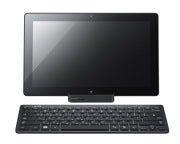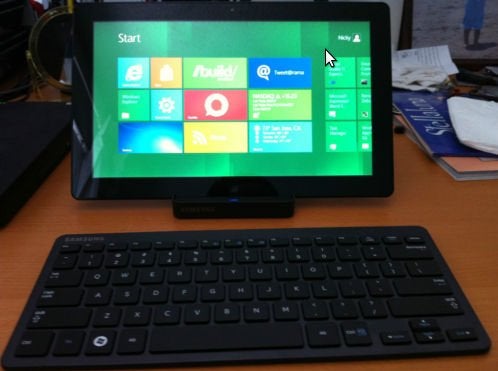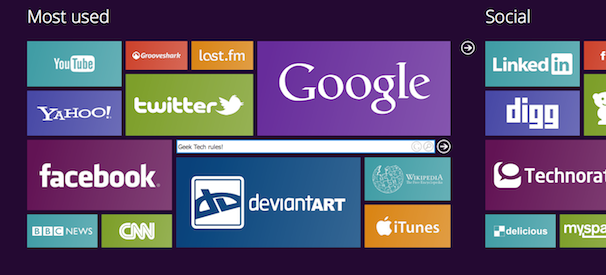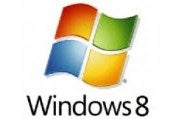 In the years since CEO Steve Ballmer's infamous "developers, developers, developers" battle cry, Microsoft's relationship with developers has been a vital component of the company's strategy. If early developer enthusiasm is any indication, Microsoft appears to have done well with Windows 8.
In the years since CEO Steve Ballmer's infamous "developers, developers, developers" battle cry, Microsoft's relationship with developers has been a vital component of the company's strategy. If early developer enthusiasm is any indication, Microsoft appears to have done well with Windows 8.
Developer response to Windows 8 has been very positive in the wake of last week's Build developer conference, with many coders expressing eagerness to try out the upcoming OS. Foremost on their minds is the operating system's emphasis on touch-based interactions, a move that many believe could give Microsoft a much-needed shot in the arm in the tablet computing space.
[ See InfoWorld's Windows 8 preview visual tour. | Galen Gruman outlines how Microsoft may finally be making Windows winners. | Keep up to speed on the key Microsoft news and insights with InfoWorld's Technology: Microsoft newsletter. Sign up today! ]
"This is a major rewriting" of Windows, says Thomas McCormick, software and systems developer at ECI Innovations, and other developers view it as an important response to Apple's iOS and Google's Android.
Central to this rewriting is the operating system's new Metro UI, which some believe will enable developers to create the kind of immersive, full-screen, touch-centric applications that are driving the tablet revolution.
Microsoft's bold move
For many developers, the Windows 8 preview came across as a bold, if not essential, step forward for Microsoft. "I think it's the most aggressive [move] they've done in the post-Gates era," McCormick says, adding that Windows 8 will "absolutely" help Microsoft in the tablet space. "The UI is very polished."
Meanwhile, HP software architect Kevin Barnett sees Windows 8 being the biggest change to the platform since Windows 95. "It's a big shift in just about every dimension," Barnett says, citing the importance of the new application model for Windows 8, the operating system's new UI, and the fact that Windows 8 could make Microsoft a significant player in the ARM processor arena.
Noble Edward, senior architect at mobile CRM applications builder Consona, says he will be talking to his employers about supporting Windows tablets. "I develop applications for Android and iPhone, and in our company, we never even included Windows Phone as part of the target," Edward says.
 Windows 8's emphasis on touch-based interactions impressed Brendan Forster, a developer at development firm Readify: "I love that they said they are putting touch first."
Windows 8's emphasis on touch-based interactions impressed Brendan Forster, a developer at development firm Readify: "I love that they said they are putting touch first."
Developer Chris DiPierro, director of software development at data collection services provider Mi-Co, agrees. Windows 8 presents "an incredible opportunity for us," DiPierro says, citing strong interest among Mi-Co customers for software targeted at the tablet form factor. "Our response thus far has been to do Web applications, but there are inherent limitations you get out of that," such as reliance on HTML5 local storage, he says. "[With Windows 8] I feel like we can port a lot of what we already have -- native .Net apps -- over to this."
DiPierro's coworker David Nakamura, director of quality assurance, likes the device span of Windows 8. "What's really neat about Windows 8 is it goes from high-end desktop machines all the way down to smaller-size tablets and slates," Nakamura says.
Analysts also chimed in on the convergence theme. "With this release, Microsoft is taking the first steps to converge the mobile world and the PC world," says Al Hilwa, an analyst at IDC. "Early indications are that Windows 8 will talk browser applications natively along with other programming models, and so [the OS] promises to bring many walks of developers under one umbrella. Converging mobile and PC developer ecosystems is what Microsoft has to do to thrive in the post-PC era."
Windows 8 reality check
But without any hands-on experience with the operating system, Windows 8 enthusiasm can only go so far. "I'll have to wait until I actually get to play with the software, the devices, and see what the experience [is like], but in theory, it looks pretty good," says HP's Barnett.
For some, even the much-needed UI makeover has room for improvement. Consona's Edward, while otherwise enthusiastic about Windows 8, found the UI layer inferior to that of Android and iOS.
Readify's Forster questioned how Windows 8 would affect existing applications. But IDC's Hilwa liked the OS's ability to accommodate Silverlight applications. "The last thing that impressed me is that you can take Silverlight apps and, with minor tweaks, get them to work with the Metro UI and also to make them available to Windows Phone," Hilwa says. "Allowing developers to leverage their code across phones and tablets will be a tremendous boost to both Microsoft's phone and PC platform."
Developer tools could be key to success
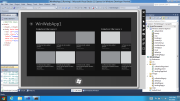 While Microsoft has yet to reveal a general availability date for Windows 8, the company did release its Visual Studio 11 Developer Preview at last week's Build conference.
While Microsoft has yet to reveal a general availability date for Windows 8, the company did release its Visual Studio 11 Developer Preview at last week's Build conference.
Formerly called vNext, Visual Studio 11 is tuned for building Windows 8 and HTML5 applications. The toolset includes templates for building Metro-style applications with JavaScript, C#, VB, or C++. Windows 8 supports XAML applications as well.
ECI's McCormick came away impressed with the developer tools on offer for Windows 8, calling them "very polished, very excellent-looking at this stage of the game."
Meanwhile, Microsoft's.Net Framework 4.5 will enable developers to write faster code, said Jason Zander, corporate vice president of the Visual Studio team at Microsoft, in a blog post. "Support for asynchronous programming in C# and Visual Basic enables developers to easily write client UI code that doesn't block, and server code that scales more efficiently," Zander wrote."The new server garbage collector reduces pause times, and new features in the Parallel Computing Platform enable Dataflow programming and other improvements."
This article, "Developers see bright future in Windows 8," was originally published at InfoWorld.com. Follow the latest developments in business technology news and get a digest of the key stories each day in the InfoWorld Daily newsletter. For the latest developments in business technology news, follow InfoWorld.com on Twitter.
Read more about microsoft windows in InfoWorld's Microsoft Windows Channel.
For more IT analysis and commentary on emerging technologies, visit InfoWorld.com. Story copyright © 2011 InfoWorld Media Group. All rights reserved.
